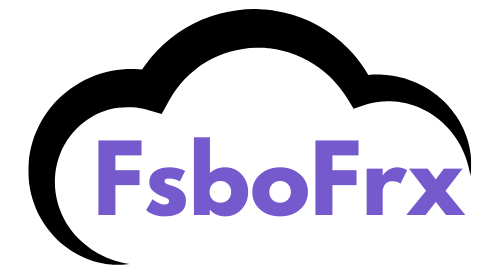The internet is a vast place filled with endless opportunities and information. However, it can also be a playground for hackers and data breaches. One incident that has caught the attention of many is the “T33n Leak 5-17.” This leak reportedly involved sensitive data that spread rapidly across online platforms, raising major concerns about digital security. But what exactly happened, and why should you care?
What Is T33n Leak 5-17?
T33n Leak 5-17 refers to an online data breach that surfaced on May 17th. It allegedly exposed a significant amount of personal data, primarily targeting younger audiences. The leak involved sensitive information, which was quickly circulated through various online forums and platforms. This incident has sparked widespread discussions about the safety of online accounts and how vulnerable personal data can be.
Why Is T33n Leak 5-17 Significant?
This leak stands out because it specifically targeted teenagers and young users, highlighting how vulnerable this demographic is online. Teens often engage in various online activities without fully understanding the risks involved. The breach has served as a wake-up call for better online safety practices and stricter privacy measures.
How Did T33n Leak 5-17 Happen?
The exact methods used in the breach remain under investigation, but initial reports suggest phishing attacks and weak passwords played a crucial role. Hackers often exploit simple vulnerabilities to access data, and in this case, they may have targeted users with poor digital habits. The leak could have originated from compromised social media accounts or unsecured databases.
The Impact of T33n Leak 5-17 on Users
The aftermath of the leak left many users feeling exposed and insecure. Personal information, including usernames, email addresses, and potentially sensitive content, was shared publicly. This led to concerns about identity theft, cyberbullying, and even blackmail. The psychological impact on young users cannot be overlooked, as the leak threatened their sense of privacy and security.
Steps to Protect Yourself from Future Leaks
One crucial lesson from T33n Leak 5-17 is the importance of online safety. Users can take several steps to protect their personal information and minimize the risk of future breaches.
Use Strong and Unique Passwords
A simple yet effective way to secure online accounts is by using strong, unique passwords for each platform. Avoid using easily guessable information like birthdays or names. Instead, opt for complex passwords with a mix of letters, numbers, and symbols.
Enable Two-Factor Authentication (2FA)
Two-factor authentication adds an extra layer of security by requiring a second form of verification, such as a text message or email code. This step significantly reduces the chances of unauthorized access, even if your password is compromised.
Avoid Suspicious Links and Emails
Hackers often use phishing emails or messages to trick users into revealing sensitive information. Always verify the source of emails, especially if they ask for personal details or direct you to unfamiliar websites. When in doubt, avoid clicking on suspicious links.
Limit Personal Information Online
Sharing too much personal information online can increase your vulnerability to breaches. Limit the details you share on social media and public platforms. The less hackers know about you, the harder it is for them to target you.
Regularly Update Software and Devices
Outdated software often contains security vulnerabilities that hackers exploit. Regularly updating your operating system, apps, and antivirus programs ensures that you have the latest security patches, reducing the risk of breaches.
Recognizing the Signs of a Data Breach
It’s essential to recognize when your data may have been compromised. Unusual account activity, unfamiliar login attempts, and unexpected password reset emails are clear signs of a breach. If you notice any of these, take immediate action by changing passwords and securing your accounts.
What to Do If Your Data Is Leaked
If you suspect your information was part of the T33n Leak 5-17 or any other breach, act quickly. Start by changing all affected passwords and enabling two-factor authentication. Notify the relevant platforms and monitor your accounts for suspicious activity. In severe cases, consider freezing your credit to prevent identity theft.
Parental Guidance for Online Safety
Parents play a vital role in ensuring their children stay safe online. Educating teenagers about the dangers of sharing personal information and encouraging healthy digital habits can go a long way in preventing breaches. Open communication about online risks can help teens make smarter choices.
The Role of Companies in Protecting User Data
While users must take steps to protect themselves, companies also bear responsibility. Organizations must invest in robust cybersecurity measures to safeguard user data. This includes encrypting sensitive information, conducting regular security audits, and responding promptly to potential threats.
How Schools Can Promote Cyber Awareness
Schools can also contribute by incorporating cyber awareness into their curriculum. Teaching students about digital literacy and responsible online behavior can reduce their chances of falling victim to breaches. Cybersecurity education is just as crucial as traditional subjects in today’s digital age.
Future Trends in Cybersecurity for Teens
As technology evolves, so do the tactics used by hackers. Future cybersecurity trends may include AI-driven security measures, biometric authentication, and advanced encryption methods. Staying informed about these developments can help users stay ahead of potential threats.
Why Online Safety Is Everyone’s Responsibility
Ultimately, online safety is a shared responsibility. Users, parents, educators, and companies must work together to create a secure digital environment. Incidents like T33n Leak 5-17 highlight the importance of collective efforts in protecting personal data.
Conclusion
T33n Leak 5-17 serves as a stark reminder of the vulnerabilities present in the digital world. By taking proactive measures and staying informed, users can better protect themselves and their data. Whether you’re a teen, parent, or educator, online safety should always be a top priority.
FAQs
What was leaked in the T33n Leak 5-17?
The leak involved personal information such as usernames, email addresses, and potentially sensitive content.
How can I check if my data was part of the leak?
Use online breach-checking tools like Have I Been Pwned to see if your email or account was compromised.
Can I recover leaked information?
Once data is leaked, it’s challenging to recover. However, you can secure your accounts and minimize further damage.
How do I teach my teen about online safety?
Discuss the importance of privacy, encourage strong passwords, and explain the risks of oversharing online.
Are companies held responsible for data leaks?
Yes, companies can face legal consequences if they fail to protect user data or respond inadequately to breaches.

